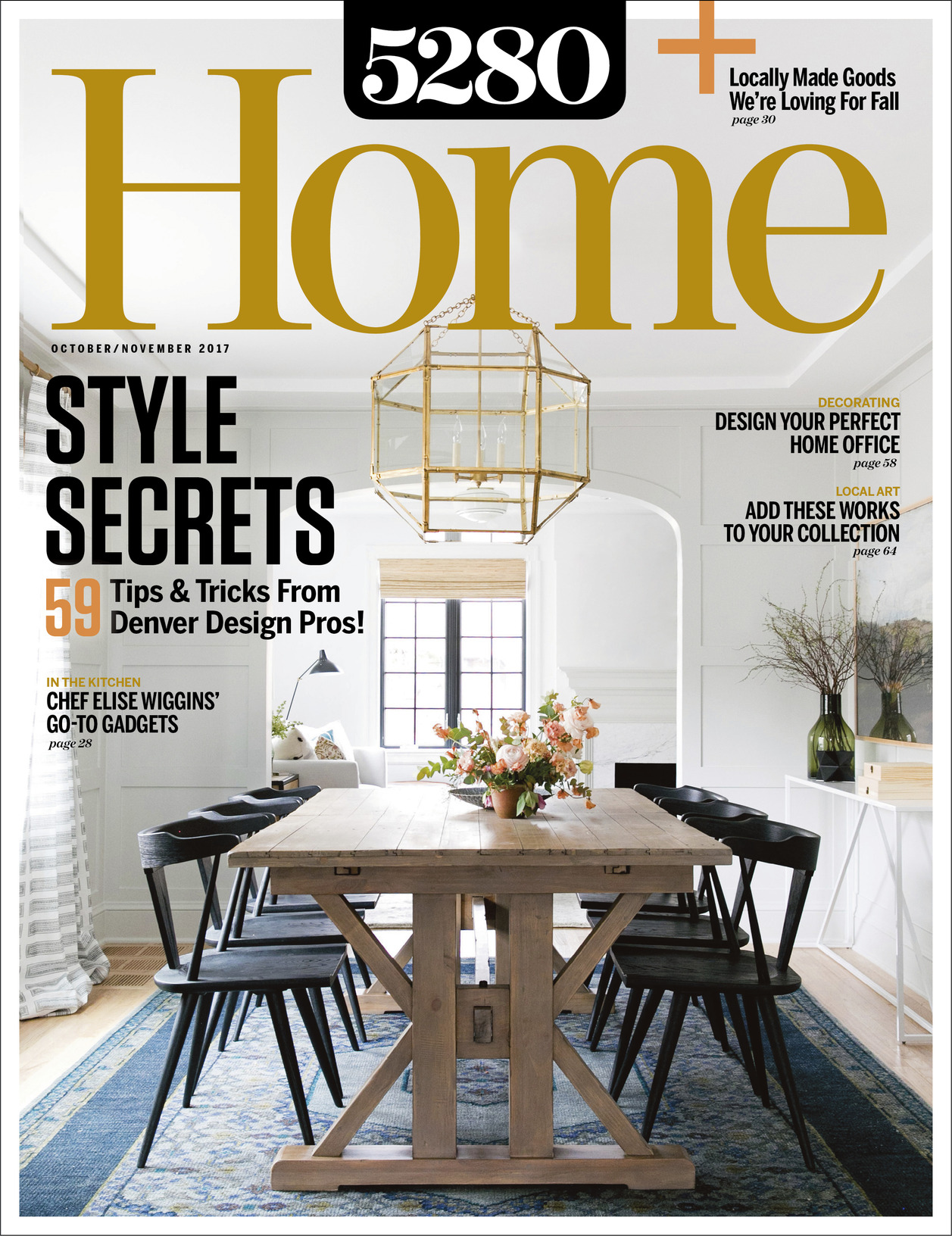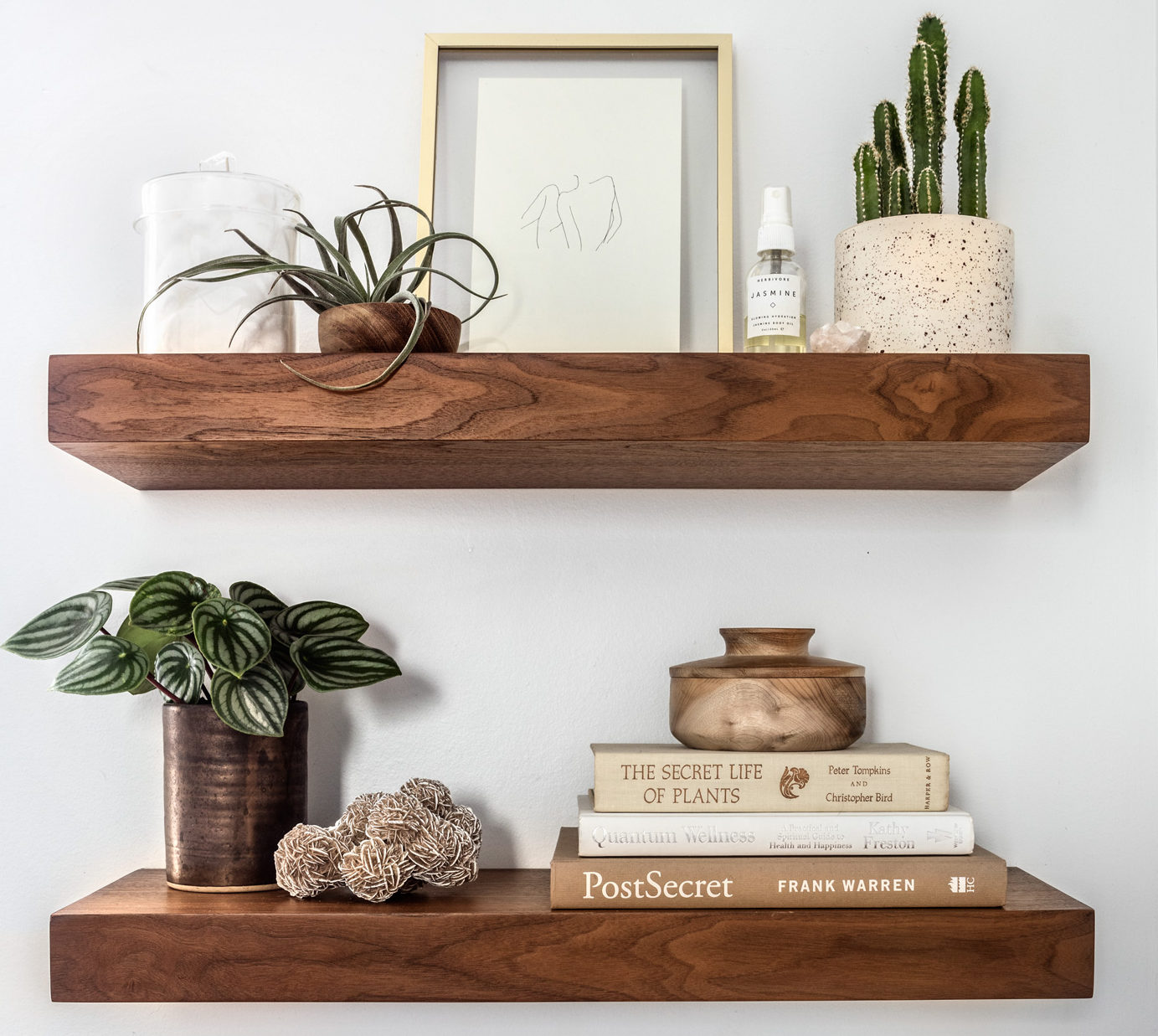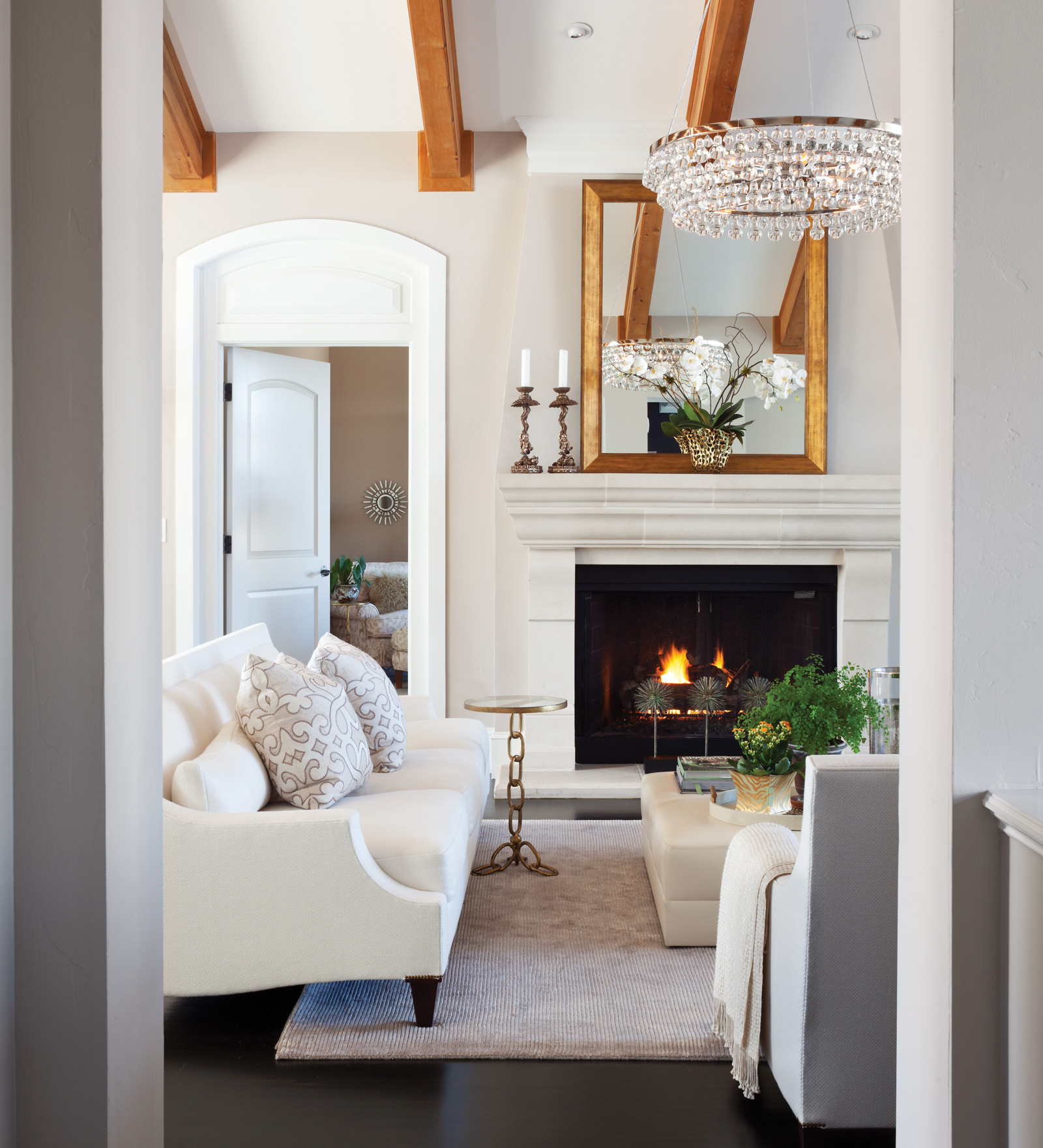The Local newsletter is your free, daily guide to life in Colorado. For locals, by locals.
Design is kind of like craft beer or first dates or ski conditions: When it’s good, you just know. But these instincts don’t always guide us to the right paint color or tell us how high to hang the chandelier. In other words: It’s best to consult the pros. So, to get to the bottom of what makes these four irresistible spaces tick, we asked the designers behind them to share their winning ideas. (You’ll be surprised by how quickly the gallery wall came together and what makes the kitchen feel oh-so Colorado.)
1. Master Bathroom
Design Secret: Celebrate your home’s history (with a nod to the present, of course!).
Design Pro: Anna Smith, Annabode & Co.

Designer Anna Smith of Annabode & Co. is part design historian. “Whatever your home’s original time period,” she says, “you want to echo that in your spaces.” In this chic, neutral bathroom, Smith honored the Wash Park home’s Victorian roots—repurposing the original door, matching the existing hardware and trim, and opting for classic white subway tile. To keep it current, she chose a modern glass shower surround (creating a perfect spot for bathing Isaac, the owner’s giant bullmastiff) and edgy matte-black floor tile (Manhattan Hexagon Mosaic by South Cypress) that extends into the shower, making the space look bigger. And, almost too cool to be true, the vanity is a retrofitted midcentury credenza. Would you believe us if we told you the space used to be a 1980s marvel—wooden toilet seat, bright pink walls, and all?
TIP! Follow Annabode & Co.’s wildly popular Instagram feed for more gorgeous ideas.
2. Entry
Design Secret: Great style starts with the right scale.
Design Pro: Devon Tobin, Duet Design Group

This smart entryway, which sets the scene for designer (and Duet Design Group co-owner) Devon Tobin’s Virginia Village home, centers on a basic—but important—design idea: Every object must be just the right size. The curvaceous console, which Tobin’s husband built at architecture school, is just six inches deep: broad enough to be a stop-and-drop zone for keys and daily essentials and slender enough to fit the narrow space. The mid-sized vintage photo of Union Station, a wedding gift from Tobin’s brother, leaves “breathing room” on the wall, she says. The two small “lipstick mirrors” (perfect for last-minute touch-ups on the way out the door) don’t distract from the main vignette. And the very-Western cowhide rug—Tobin’s go-to for entryways of all kinds—stands up to mucky snow boots and kids’ shoes. “I don’t want people to walk in and feel like they have to take their shoes off,” she says—no-fuss Colorado style at its finest.
TIP! For smaller renovation projects (with tighter budgets), check out Duet Design Group’s new à-la-carte design service, Inside Stories.
3. Kitchen
Design Secret: Keep it casual and organic—perfect for Colorado.
Design Pros: Interior design: Lovedy Barbatelli, Barbatelli Signature Interiors; Kitchen design: Marcus Otten, Exquisite Kitchen Design; Construction: Nick Muller, Nehemiah General Contractors

Though our beloved state is something of a melting pot of design (with style—and residents—hailing from all over the world), there’s one rule we can all agree on: We don’t like fussy spaces. That idea reigns supreme in this Golden ranch-house kitchen, which interior designer Lovedy Barbatelli of Barbatelli Signature Interiors and kitchen designer Marcus Otten of Exquisite Kitchen Design describe as “grand transitional,” meaning “not too traditional, not too sleek.” Otten structured the layout to separate food prep, cooking, cleaning, and lingering—all the “real life” stuff—and worked with Barbatelli to dress the space with plenty of warm, natural finishes: a glass-and-stone backsplash, furniture-like oak cabinets, and a mahogany island. “It’s a totally practical space,” Barbatelli says. People in Colorado like to be comfortable; they want to just live life.” Can we get an amen?
4. Gallery Wall
Design Secret: Start with stylish (and budget-friendly) stand-ins you can swap out later.
Design Pro: Emily Tucker, Emily Tucker Design Inc.

For their first home, a Boulder couple envisioned a gallery wall in their master bedroom that would showcase photos of future travels. But they didn’t want to stare at a blank wall until they’d checked off the destinations on their bucket list. So designer Emily Tucker of Emily Tucker Design Inc. curated this punchy array of prints and objects to serve as a “cheap and cheerful” placeholder. The trick to making such eclectic elements look like a collection, she says, is to “make sure every piece works with at least one other piece.” See: pops of gold
and blue throughout. Yet perhaps Tucker’s greatest secret is that she purchased everything on the wall for about $300. That means more moolah for the adventure budget.
Golden Rules
We asked 12 local interior design firms to share their go-to style advice.

- “Choose a bold wallpaper or playful pattern with paint for bathrooms.” —Regan Mattingly, Chalet
- “Don’t forget the ceiling. So many times the ceiling is left white. I say, ‘Seize the ceiling.’ Paint it the same color as your walls, but in a flat finish. Better yet, wallpaper your ceiling and paint the trim a bold or complementary color to the paper. Leave walls neutral or use a plain grasscloth for texture.” —Ramey Caulkins, Griffin Design Source
- “Start with the color palette. I pick a few colors that my clients really like and that make sense together and repeat them throughout the house, in different applications. For example, navy blue: Paint the front door navy, then repeat the color in another room on the sofa, and lacquer the chandelier in the kitchen. Rhythm in color is key; it’s like art.” —Beth Armijo, Armijo Design Group
- “Don’t fill every surface. Overdoing accessories or art creates busyness. Your eye needs a place to rest.” —Ashleigh Weatherill, Ashleigh Weatherill Interior Design
- “We always encourage our clients to purchase a few beautiful coffee-table books. It’s great when the subject is personal and reflects our clients’ hobbies, travels, art, or fashion sense. They can be great conversation-starters and are perfect to use to accessorize coffee tables, consoles, and shelves.” —Kelly Zibell, Knape & Zibell Interior Design
- “Always hang your drapery panels as close to the ceiling as you can. I find most folks try to hang them right above the window frame. Hanging the drapery rod and panels about three to four inches down from the ceiling will create a longer vertical visual line, and make the room appear taller and more grand.” —Kristen Terjesen, Studio 10 Interior Design
-

Photo by Emily Minton Redfield. “Every room needs a combination of vintage and new. The one thing that sucks the life out of a room is filling it with all new furniture and accessories—it makes it look generic and ho-hum in a hurry. A great way to add soul and texture is to mix in some vintage pieces. I look at Craigslist and in local antiques shops for my clients all the time.” —Laura Medicus, Laura Medicus Interiors
- “Go ahead: mix metals. Layering metal finishes—bronze, copper, hand-rubbed brass, silver, and nickel—can give a home a collected look and timeless appeal. If your budget allows, invest in some hardware, lighting, mirrors, and accessories that have a hand-rubbed or living finish that will patina over time, and layer these with gilded or bronze finishes.” —Deidre Oliver, Oliver Designs
- “Decor pieces are also known as ‘curiosities,’ and they should be just that: curious to visitors—special, unique. The best time to buy these items is during your travels, but small, independent boutiques have a more discerning collection of ‘cool stuff’ than what I keep seeing in the chain stores. Right now I like Jayson Home, Alice Lane Home Collection, Creel and Gow, and, locally, Voss Art & Home.” —Liz Finkelstein, Mile High Style
- “Every home needs five design elements: wood, metal, reflective surfaces (mirrors, glass), something organic (plants or flowers bring in the energy and the green), and varying textures. For me, spaces feel flat if they don’t incorporate all five.” —Kristen Thomas, Studio Thomas
- “Invest in the best quality that you can afford for at least one key furniture piece in each room—it will elevate the rest of that space.” —Susan Schwab and Kristi Dinner, Company KD
- “I have a strong aversion to matching sets. Mixing and matching pieces, as well as finishes, not only adds visual interest, but it creates a more curated look.” —Ashley Campbell, Ashley Campbell Interior Design












